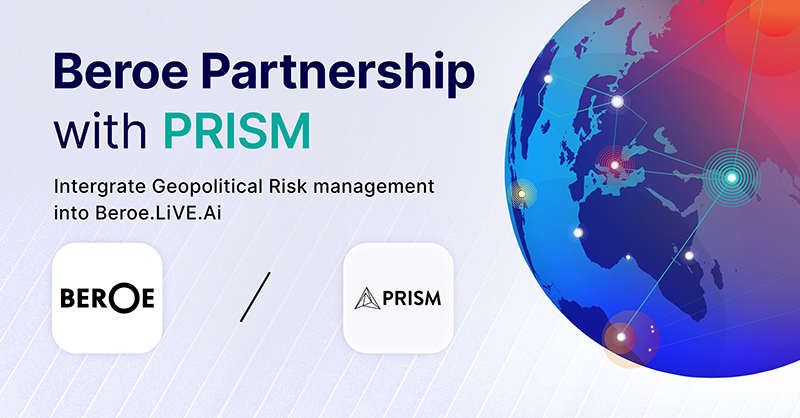Contact Center Market to Reach $430-$438 Billion by 2024, Says Beroe Inc
Source: PR Newswire
RALEIGH, North Carolina, October 1, 2019 - The global contact center market is forecasted to grow at a CAGR of 9-11 until 2024, according to Beroe Inc, a procurement intelligence firm. The outsourcing market is expected to register continuous growth, but at a slower rate due to sluggish demand while the in-house segment is estimated to note higher growth due increase in the new captive center set up.
North America is the leading buyer of customer care outsourcing services, followed by Europe (mainly Western Europe), the UK and some parts of the MEA. India and the Philippines are the foremost countries in managing contact center outsourcing demand and will continue to maintain their top positions in the near future. Developed markets form about 74–80 percent of the overall outsourced contact center contracts
https://www.beroeinc.com/category-intelligence/contact-centers-market/
Beroe, which is based in North Carolina, further stated that procurement experts can access this report on its recently launched market intelligence platform Beroe LiVE: live.beroeinc.com
Earlier, contact center buyers’ focus was mainly on cost-saving, but now the focus has shifted to maximizing value to end-consumers due to rising customer demand and competition, driving the market for contact centers and need for specialized service capabilities. Rising quality concerns, and very limited cost savings pose challenges to the market influencing the buyer’s decision of outsourcing.
Around 65–75 percent of global contact center services are kept in-house and the remaining 30-35 percent is outsourced to third parties. The industry is dominated by in-house contact centers, and this trend will sustain in the future as well. Other prominent trends include the adoption of cloud-based contact centers, higher use of social media for customer services, omnichannel strategies, self-service support and usage of analytical tools. Buyers are shifting their focus from cost saving to value-added services to create strategic relationships wherein both parties contribute to each other’s success.
Key Findings:
- Rising customer focus and complexity to provide a better customer experience will encourage buyers to outsource contact center services to third parties. Therefore, it has been noticed that outsourcing spending has grown between 5 percent and 6 percent annually, while in-house spending has been relatively flat.
- There is an increase in the adoption of work-at-home agents in the industry and service providers’ emphasis on service levels and transparency. High-impact cost drivers like staff turnover rates and handle time are likely to reduce in the next three years. This trend is likely to reduce the cost of services
- Various regulations, such as the Dodd-Frank Act, Basel III, MIFID II, OCC Guidelines and FRB restrict companies to keep personal, financial and confidential data within the country’s boundary restricts outsourcing various processes to other locations.
- Key performance indicators in the contact centers market are first call resolution, average speed to answer, transfer rate, abandoned call rate and net promoter score. Negotiation factors include call volume, adjustment of seasonal call rates, reduce agent–supervisor ratio, and upgrade technological infrastructure.
- Buyers are exploring opportunities to engage only with their list of preferred service providers for their contact center requirements, consolidating their contact center spend for multiple locations and engaging in strategic relationships. This enables them to negotiate discounts, as the volume of business is higher with the shortlisted pool of service providers
The research methodology adopted for the report included:
- Experts with twenty years of domain experience
- Interaction with buyers
- Inputs from supply chain partners
The major cost factors involving a global contact center would be the agent and technology costs, which contribute to about 70–80 percent of the total cost. The training cost is high in this industry due to the high attrition rate. Most of the service providers avoid the agent cost benefits by using more contracted labor than permanent employees. Technology cost covers the costs for ACD, IVR, and CRM, which are widely used to integrate the performance and future innovation in technology is expected to lower the costs associated with it.
The report also includes:
Market Analysis:
- Global Contact Center Market Maturity
- Industry Trends
- Drivers and Constraints
- Regional Market Outlook
- Industry Outlook
- Porter’s Five Forces Analysis
Supply Analysis:
- Supply Trends and Insights
- Key Global Contact Center Suppliers
- Key Regional Suppliers: Service Portfolio
- Key Global Supplier Profile
- Supplier SWOT Analysis
Cost & Pricing Analysis:
- Cost Break up: Should Cost Model
- Cost Saving and Analysis
- Cost Analysis and Expected Savings
- Key Cost and Price Drivers
Best Practices:
- Sourcing Models: Comparative Analysis
- Pricing Models: Comparative Analysis
- KPI for Social Media and Self-service Channels
- KPI and SLA Components
End-User Industry Update:
- Pharmaceutical
- Financial Services (BFSI)
About Beroe Inc.:
Beroe is the world's leading provider of procurement intelligence and supplier compliance solutions. We provide critical market information and analysis that enables companies to make smart sourcing decisions—leading to lower costs, greater profits and reduced risk. Beroe has been providing these services for more than 13 years and currently works with more than 10,000 companies worldwide, including 400 of the Fortune 500 companies.
To learn more about Beroe Inc., please visit: http://www.beroeinc.com
Media Contact:
Rob McMurtrie
rob.mcmurtrie@beroe-inc.com
Related News
View all
Beroe introduces on-demand geopolitical risk analysis through PRISM enabling C-Suite to protect against ongoing supply chain disruptions

Beroe and Upply Combine their Expertise to Revolutionize Logistics Solutions
